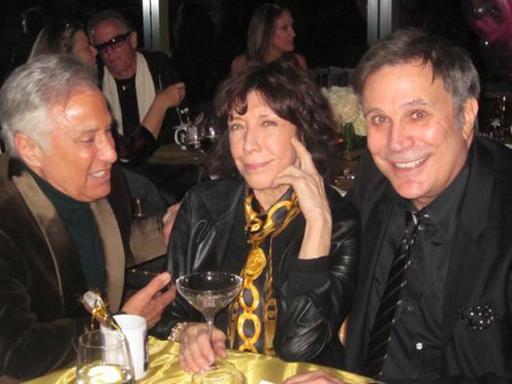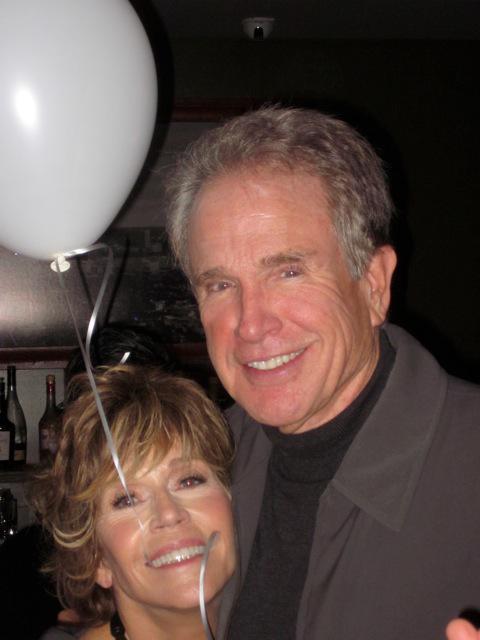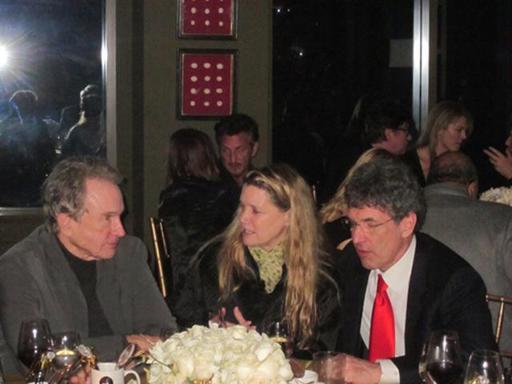Prime Time (52 page)
Authors: Jane Fonda
Tags: #Aging, #Gerontology, #Motion Picture Actors and Actresses - United States, #Social Science, #Rejuvenation, #Aging - Prevention, #Aging - Psychological Aspects, #Motion Picture Actors and Actresses, #General, #Personal Memoirs, #Jane - Health, #Self-Help, #Biography & Autobiography, #Personal Growth, #Fonda

Teilhard de Chardin was a great French philosopher, Jesuit priest, and prolific author. This lovely story about him is, for me, a perfect example of someone living full tilt right to the end: playful, generous, curious, overflowing with Generativity (what Dr. Houston calls his “leaky margins with the world”)—inspiring the young girl to become a “pilgrim of the future,” to act from more than “a tiny portion of herself.”
I have—rather late in life—begun to feel the exhilaration of no longer acting from a “tiny portion” of myself. My wish is that all of us experience this and, thereby, become “pilgrims of the future,” using our lives to complete ourselves—to develop our bodies, our minds, our hearts, and our souls to become all we can be and then use all of it for something beyond ourselves.
Ours is the first generation to be well prepared for a vital Third Act. As women, we’ve got the numbers, the consciousness, the health, and the knowledge to make us better able to meet whatever challenges this last act may bring. I believe that our actions, like stones tossed into a pond, will ripple to every inlet of society. As we shape our own last third of life, so do we help to transform the experience of age for ourselves, our men, and our children … modeling what it means to live an examined life of reflection, compassion, and balance.
Bonus Photos
Turn the page to see exclusive photos from Jane Fonda’s 73rd Birthday party.
Me with Rosario Dawson and her beau, Mattieu.
Michael Black, Lily Tomlin, Arnold Steifel.
Jane and Warren Beatty.
Jane and Sean Penn.
Jane, Richard, and Chelsea Handler.
Warren Beatty, Cindy, and Alan Horn.
APPENDIX I
Summary of Main Areas of Anti-aging Research
Calorie-Restriction Diet
W
orking with mice almost thirty years ago at UCLA, the behavioral geneticist Dr. Richard Sprott and his colleague and mentor, Dr. Roy Walford, discovered that you could start calorie restriction in middle-aged mice and still have the possibility of increasing their life span by 15 or 20 percent. Now the executive director of the Ellison Medical Foundation, Dr. Sprott discussed the effects of calorie restriction on life span at an Age Boom Academy seminar I attended in 2007 at the International Longevity Center.
“Here is the only experiment that actually changes life span,” Dr. Sprott said. “It can extend life span from two to six times longer in mice, small worms, fruit flies, and dogs. There are ongoing experiments with a large number of self-volunteer humans, and with nonhuman primates, that appear to be working but are not completed yet. What it demonstrates is that if you reduce your calorie intake by 45 percent, or roughly down to a diet of 1,250 calories a day (but in the face of otherwise excellent nutrition so you create a state of undernutrition without malnutrition), this can, in these experimental models, produce about a 40 percent increase in life span.” Dr. Sprott said that they do not know yet if a similar kind of change in diet would produce comparable increases in human life spans. “There are good genetic reasons why it might and good genetic reasons why it might not,” he noted. “There are certain behavioral reasons why it is hopeless. Bob [Butler] and I both know the foremost human practitioner of this therapy, who bet his life on the fact that it would work, and it didn’t.” An experiment was started in 1989 with the rhesus monkey, a species closely related to humans. These monkeys can live up to forty years, so it’s not a short experiment. Dr. Sprott said, “We are starting to see statistically significant improvement in survival and resistance to disease and favorable effects on brain aging.”
SIRT1 and Resveratrol
In their research, Dr. Sprott and his colleagues discovered a universal gene. Found in plants, in bacteria, and in humans, it seems to control the aging process and appears to underlie many of the benefits of the calorie-restriction diet. The gene is called SIRT1, and it is activated by a molecule called resveratrol, which is found in the skin of red grapes (and is a constituent of red wine . . . but don’t get your hopes up; you’d have to drink a thousand bottles a day to see any effect). Resveratrol is also found in mulberries, peanuts, and other plants, including an Asian plant called giant knotweed.
1
Dr. Sprott said, “When you feed this molecule into mice in a pure form, they live longer, they are almost immune to the effects of obesity, they don’t get diabetes, cancer, or other age-related diseases. Most of these results have yet to be replicated in humans. In the only positive human trial, extremely high doses (three to five grams) of resveratrol in a proprietary formulation have been necessary to significantly lower blood sugar.”
“But,” he added, “the reason for doing the research is not be-cause we think that it would actually produce these big increases in human life span. We believe that if we understood why it produces these increases in life span in other organisms we might discover promising therapies in the treatment of metabolic diseases, including obesity, diabetes, cancer, Alzheimer’s, and other diseases of aging.”
The Telomere Hypothesis
Perhaps you have read about the telomere hypothesis of cellular aging. I have already discussed how many of our cells are continually dividing. Every time they divide, the very tail ends of the chromosomes—called the telomeres—become shorter, until the time comes when they are too short to divide anymore. The cells don’t die; they just quit replicating, for reasons nobody understands, and this is called senescence. Some cells that do not go through this dividing and gradual shortening into senescence are the reproductive cells known as the germ line. In these cells, a special enzyme called telomerase shuts off the process of telomere shortening. If you put the telomerase enzyme back into the cell, it puts the DNA back on the end of the chromosome, so that it doesn’t get short. The result is immortality at the cellular level. Sounds like the Fountain of Youth, right? Trouble is, this is also what we call cancer. Tumor cells are immortal cells because they have been released from the telomere-shortening process.
Biomarkers of Aging
The anti-aging medical interests and the nutraceuticals industry issue a lot of promises about tremendous increases in life span and health if you’ll just take the right supplements, human growth hormones, resveratrol, or all sorts of new elixirs. Look at all the longevity spas springing up all over the place. Dr. Sprott explained, “They run a series of tests on you, looking for what they call biomarkers of aging, and at the end of the tests they will tell you that according to those biomarkers you are in pretty good shape except that you have this system and that system that need a little tuning up—for the average cost of $25,000 a year for the rest of your life. What they don’t tell you is that the only thing that is going to change very much is the thickness of your wallet. We just don’t know enough yet. One problem is that National Institute on Aging grants are for a maximum of four years, but right now it takes one hundred and fifty years for scientists to know if an experiment to extend the human life span has worked. Biomarkers of aging could shorten up the whole process because they would show us the rate at which an organism is aging in less than the life span of that organism. Well, I spent a big chunk of my career and a big chunk of NIA’s money searching for the biomarkers of aging, and I can tell you there aren’t any.”
Dr. Sprott feels that a danger of the current promises of longevity is that they are simply not true, and “it encourages the public belief that you can get health out of a bottle; that all you need to do is to swallow a pill rather than increasing your life span and health span by a combination of having chosen long-lived parents and living an appropriate, healthy lifestyle.”





